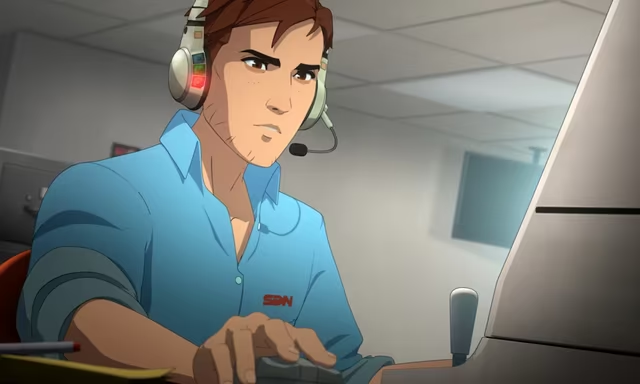If you click on a link and make a purchase we may receive a small commission. Read our editorial policy.
The hidden hardware hack that made the original Legend of Zelda a breakthrough for the NES and all game systems
Being able to save your game seems totally normal now, but Nintendo had to work around the limitations of the NES cartridges to make it happen.

Popverse's top stories
- Dispatch ending explained: How to get the Hero, Antihero, and Everyman endings
- Watch now: Watch Marvel's Fantastic Four movie reunion with Ioan Gruffudd & Michael Chiklis from NYCC 2025
- Why Captain America quit: The political crisis that reshaped Marvel’s most iconic patriotic symbol
All week long: Revisit the highlights and lowlights of 1987 with Popverse's Made in 87 week.
For nearly 40 years, The Legend of Zelda series has been one of the most important parts of the Nintendo brand. Each console generation comes with a new entry in the increasingly complicated Hyrule timeline and includes some new mechanic that shows off exactly why Nintendo has been one of the most consistently influential developers in gaming. However, the biggest innovation that the original Legend of Zelda game introduced wasn’t in the gameplay; it was in the cartridge itself.
This might sound like Old Man Yelling at Clouds territory, but for a long time, console games didn’t have save files. You either had to restart from the beginning, like in Super Mario Bros., or you had to input a code to take you back to where you left off, like in Mega Man. The first option severely limited how long a game could be since you couldn’t expect people to play for more than a few hours at a time. The second allowed for longer games, but usually didn’t include things like items or health in the save state, so they were always reset. Plus, you had to not lose the paper you wrote the code down on, which, if you’ve ever seen the state of a teenager’s room, you’ll know can be as impossible as the game itself.

Why were save files so difficult in NES games? We’re going to get a little technical here, so stick with us. Without getting too deep into it, there are two types of memory in computers of the time. You have Read-Only Memory (ROM) and Random Access Memory (RAM). ROM is something that doesn’t get changed once the game ships. The most important feature of ROM is that it exists even without a current. You can disconnect it from a power source, and it remains there, waiting for you to access it.
In 1987, the iconic Teenage Mutant Ninja Turtles cartoon debuted - and all our lives were changed. Watch this reunion of the original voice actors:
This is, as you’d expect, different from RAM, which is much easier to change and rewrite. That is the whole purpose of RAM. Any save file in a game needs to be written in RAM so that it can be updated with things like your hit points, location, and equipment, but there is a catch. RAM usually requires a constant power source. If that power source is disrupted, your save file is wiped.
The Legend of Zelda was not the first game to have save files. There were plenty of RPGs for PCs that had save files. However, it was the first game for the NES to ship with the ability to save and carry on your progress, meaning you didn’t have to beat the game in a single sitting or write down pesky codes. Nintendo got around the power issue by having a watch battery in the cartridge itself. This kept the necessary steady current needed to keep the save file, but it took up valuable space in the cartridge. Considering how limiting the cartridges themselves were, even a small amount of space was difficult to sacrifice.

Other games would soon follow – Final Fantasy, which shipped for the NES a year after Zelda in Japan, would also have an internal save file system powered by a battery. The good thing about these batteries is that they would last a very long time. Decades, in many cases, though not forever, and once they failed, they had to be replaced by the player in order for the saves to function again.
There are plenty of ways that The Legend of Zelda changed gaming when it landed in the US in 1987. The music was evocative and stirring. The scale of Hyrule was larger than anything we had seen in a console before. But that tiny little battery gave developers license to make longer games that took days and weeks to beat, rather than hours. It meant having stories that were told in segments rather than in text in the manual. It was a huge leap forward for video game narratives, and most players would never even see it because it was buried out of sight.
Get your wide-shoulder blouses and your Members-Only jackets, and go back in time with Popverse's Made in 87. Highlights include:
- Inside the chaotic rise and fall of The Lost Boys TV series that never made it to air
- How Bart Simpson was quietly toned down from being "so mean" before The Simpsons' first episode, as revealed by his long-time voice actor Nancy Cartwright
- Marvel Comics killed the X-Men in 1987 to reset the franchise - but it didn’t stick
- Why the Princess Bride’s iconic duel is an even better swordfight than you remember
- How The Golden Girls became a staple at gay bars in the 80s
- Inside Spider-Man’s chaotic 1987 bachelor party that Marvel turned into a real-life spectacle
Follow Popverse for upcoming event coverage and news
Find out how we conduct our review by reading our review policy
Let Popverse be your tour guide through the wilderness of pop culture
Sign in and let us help you find your new favorite thing.














Comments
Want to join the discussion? Please activate your account first.
Visit Reedpop ID if you need to resend the confirmation email.